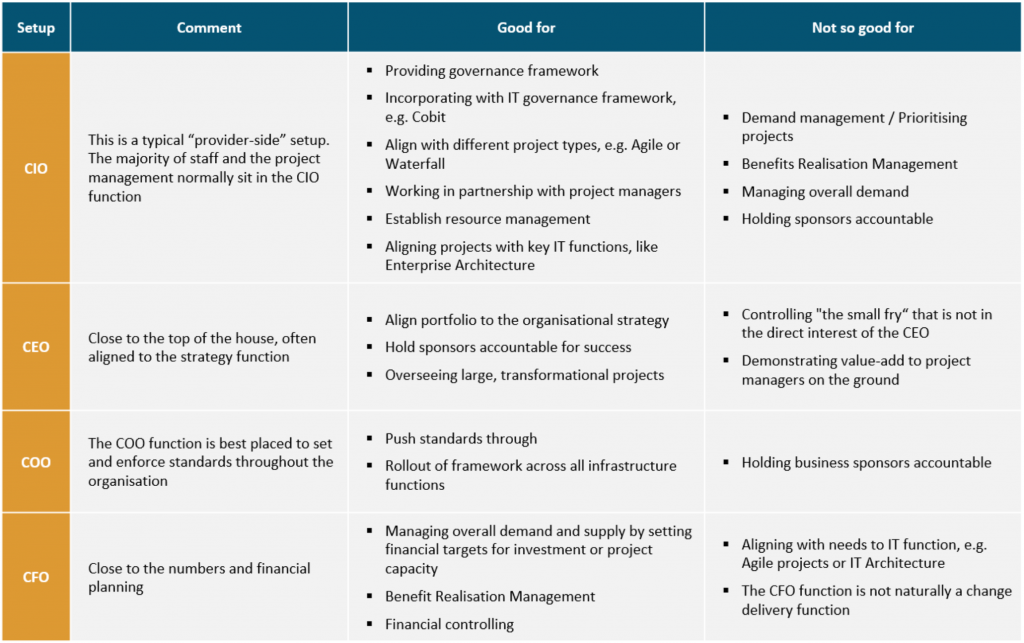Building a successful Enterprise PMO
As organisations grow, their project portfolio becomes more complex or important projects fail management will set up an Enterprise PMO. Their names are different (e.g. Portfolio Management Office, Portfolio Management, PPM, Multi-Projectmanagement, Corporate Project Portfolio Management etc.), but in essence it will be responsible for the day-to-day oversight of the project portfolio.
I have set up such EPMOs in different organisations with different flavours and objectives. Some worked better than others. Below I would like to share some of my experience and lessons learnt.
Consider where you sit in the organisation
Generally there is no right or wrong place for the setup in the organisation. Some are located within the IT organisation, others in Finance or with the CEO Office. Some positions work better than others for specific aspects the EPMO’s objectives. If there is a choice, consider the 2-3 most important objectives you want to achieve. Then consider from where those objectives can be best delivered.
Below is a list of typical setups. In addition to the main, central setup larger organisations might add divisional sub-PMOs to balance central vs. divisional requirements.

Senior management backing
To become successful you need authority right from the top. When you set up shop and when things become difficult. As soon as you reject the first project submission because the business case does not stack up authority is of essence. People will try to bypass you or get special treatment using their network. At this point they need to be told to get back into the line.
Run by experts, not by senior management
Whilst you are dependent on senior management backing you need to become the expert to run your shop. Do not let senior management interfere how you exactly do this.
One example is senior management demand for more data that is then pushed without much thinking into the PPM system. A lack of decision-making is often blamed on the lack of (detailed) information provided. Your senior management will always ask for more information without giving much thought into the time and effort to provide this data.
The nice marketing slides of your PPM system provider with shiny charts and reports only work with quality data. You need to balance the effort of asking for extra data with the impact on data quality.
Tools and standards give you power
As EPMO, you typically are in charge of the PPM system. You can define the setup, the data model and the surrounding processes. This will give you access to the organisation via definition of standards, training, rollout and demand management.
„A bit of governance is good – more is better?“
This is a term I heard a few times on a Gartner PPM summit. You need to find the right balance between heavy-handed governance processes and hands-off trust in your people. The initial transparency might be welcome, the more you add the more you could become a bureaucratic monster.
Do not expect to be liked…
…but you should want to be respected. Also, consider yourself as much as serving as policing the individuals you oversee.
Do provide guidance and information throughout. It is really important to be as visible as possible to the „end user“ – i.e. the project manager and project PMOs. This can avoid the „ivory tower“ trap: you try to please your management, get disconnected from reality and push all requirements to the end user without understanding the work you create.
and do listen
Give your end users a voice by letting them influence how to improve PPM processes and listen to their expertise and feedback.


